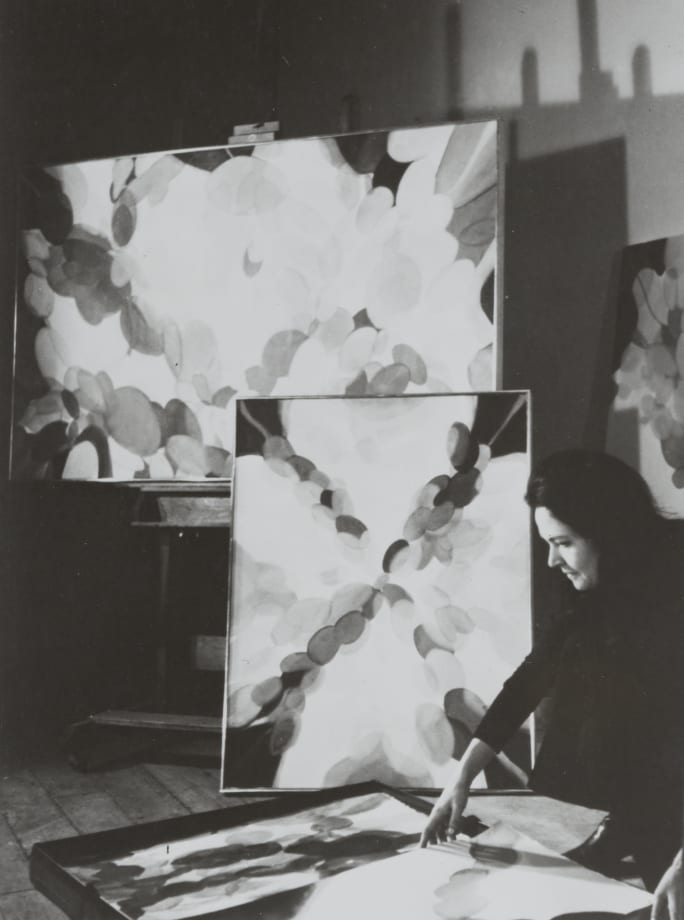Alice Baber, who straddled the worlds of Abstract Expressionism and Color Field painting, was known for her luminous paintings that transliterated color and motion onto canvas. To Baber, abstract painting was "outer space," and she stated in an 1973 interview that, in front of an abstract painting, “there is a sense of infinity.” Her paintings, which made frequent use of watered-down oil and acrylic paint, aimed to express light's ethereal quality and to create a sense of spiritual displacement within the viewer — as if we, too, could dissolve into the painting's atmosphere.
Growing up between Kansas, IL and Miami, FL — the latter being where her family spent the winter months, due to Baber's poor health — Baber remembers her childhood as being "in color." After graduating in 1948 with a painting M.A. from University of Indiana, she moved to New York at the insistence of her professor, Alton Pickens.
Once in New York, Baber became a key mover in multiple art scenes, becoming a founding member of Tenth Street co-operative March Gallery and completing a residency at Yaddo in Saratoga Springs. Upon moving to Paris, she joined a group of North American painters including Sam Francis, Joan Mitchell, Shirley Jaffe, and Paul Jenkins.
Her innovative stain-and-lift technique brought a unique translucence to her paintings, blending inspiration from past art and her love for color seen in her international travels. This led to exhibitions at the A. M. Sachs Gallery and participation in notable shows like Women Choose Women at New York City's Women's Interart Center in 1973. The show featured Baber alongside names like Judy Chicago, Perle Fine, Yvonne Thomas, Carmen Herrera, Lois Dodd, and Faith Ringgold. In 1975, Baber curated the exhibition Color, Light and Image, held to mark the United Nations' 'International Women's Year.'
In 1976, Baber embarked on a four-month lecture and exhibition tour of 13 Latin American countries, sponsored by the United States Information Agency. Baber supported herself with writing and teaching throughout her career, working as an art editor for the women’s magazine McCall’s, serving as an artist-in residence at the University of New Mexico’s Tamarind Institute, and teaching painting at The New School, UC Santa Barbara, and UC Berkeley.
Despite a life cut short by cancer at age 54, Baber achieved considerable acclaim by exhibiting, teaching, curating, and writing across the world. Today, her work is in 40 museum collections spanning Europe and the Americas.
